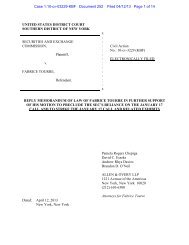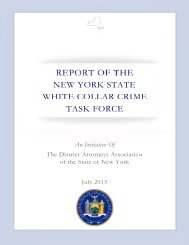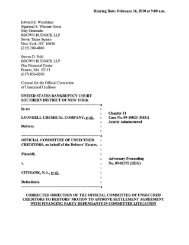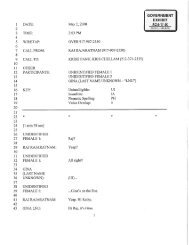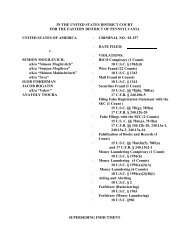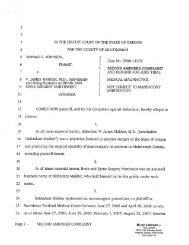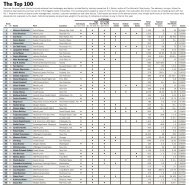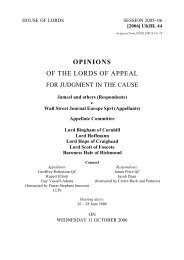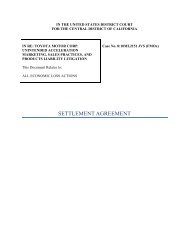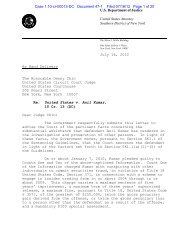Salz Review - Wall Street Journal
Salz Review - Wall Street Journal
Salz Review - Wall Street Journal
You also want an ePaper? Increase the reach of your titles
YUMPU automatically turns print PDFs into web optimized ePapers that Google loves.
117<br />
<strong>Salz</strong> <strong>Review</strong><br />
An Independent <strong>Review</strong> of Barclays’ Business Practices<br />
outcomes, have agreed and published an overall set of board objectives in<br />
meaningful detail. This improves the accountability of the board for its effectiveness,<br />
enabling shareholders to judge what it considers important and how well it succeeds<br />
in achieving the objectives. We suggest that Barclays considers this.<br />
Recommendation 14: Board effectiveness<br />
The Board must be actively engaged in the process of improving its own<br />
effectiveness, including through regular and rigorous evaluations. The Board<br />
should report openly on the evaluation process, set forward-looking objectives<br />
for improvement and explain progress against these objectives.<br />
Engagement with Shareholders<br />
9.76 Our discussions with shareholders suggest that some feel their concerns have not<br />
always been listened to by the Barclays Board. Some told us, for example, that they<br />
had raised concerns about executive pay and Board oversight well before the 2012<br />
Annual General Meeting (AGM). There is no doubt that Barclays was faced with<br />
some difficult issues, including the bonus for the Group Chief Executive and certain<br />
tax equalisation matters. Not resolving shareholder concerns appears to have led to<br />
significant votes against both the Remuneration Report and the reappointment of the<br />
Remuneration Committee Chairman. We suggest that, overseen by the Chairman,<br />
there should be more discussion and openness over a course of time to avoid this<br />
sort of stand-off. This, of course, requires engagement by shareholders as well as by<br />
Barclays. HSBC’s annual reports feature an extended description of the methodology<br />
and judgments behind variable pay awards for executive directors, supported by<br />
quantitative disclosures. Openness should in principle provide a better basis for<br />
annual discussions with shareholders on remuneration. 192<br />
9.77 Many shareholders also raised concerns about Barclays’ financial information which<br />
they regarded as difficult to understand, even by the standards of an industry beset<br />
by complexity in its disclosures. Many commentators have expressed opinions similar<br />
to Andrew Bailey who, on the point of the risk-weighting system, recently said: “We<br />
need a lot more transparency to the outside world… I talk a lot to investors and the<br />
analyst community… and they do not understand it and they have lost confidence in<br />
it… Do not just dump data into the world: please have meaningful, sensible<br />
disclosure.” 193 A recent publication by the European Banking Authority also found<br />
significant variations in the way a sample of banks calculate Risk Weighted Assets<br />
(RWAs) – only half of which could be explained by objective factors like asset mix<br />
(see also Appendix J). 194<br />
192 HSBC Holdings plc, 2012 Annual Report, March 2013, pp. 347-367.<br />
193 House of Commons Treasury Committee, Bank of England November 2012 Financial Stability Report, Oral and<br />
written evidence, 14 February 2013, ev 10;<br />
http://www.publications.parliament.uk/pa/cm201213/cmselect/cmtreasy/873/873.pdf.<br />
194 European Banking Authority, Interim results of the EBA <strong>Review</strong> of the Consistency of Risk-Weighted Assets,<br />
February 2013; see also Appendix J.




